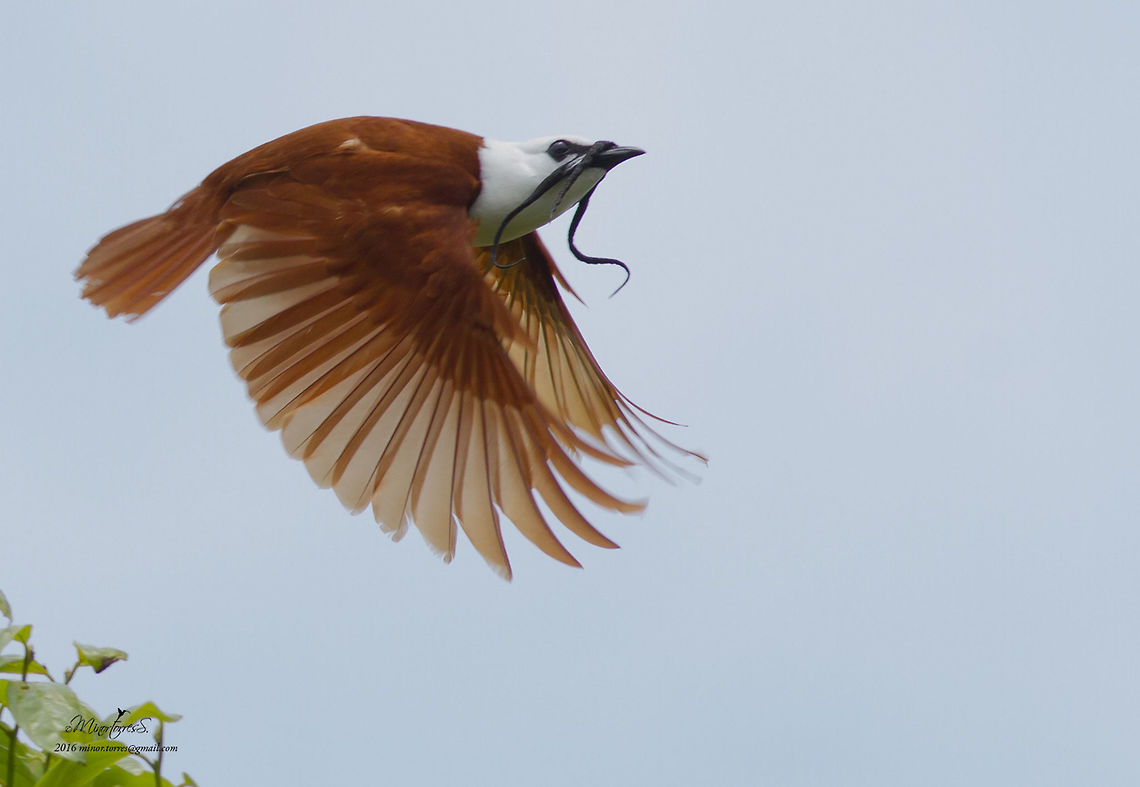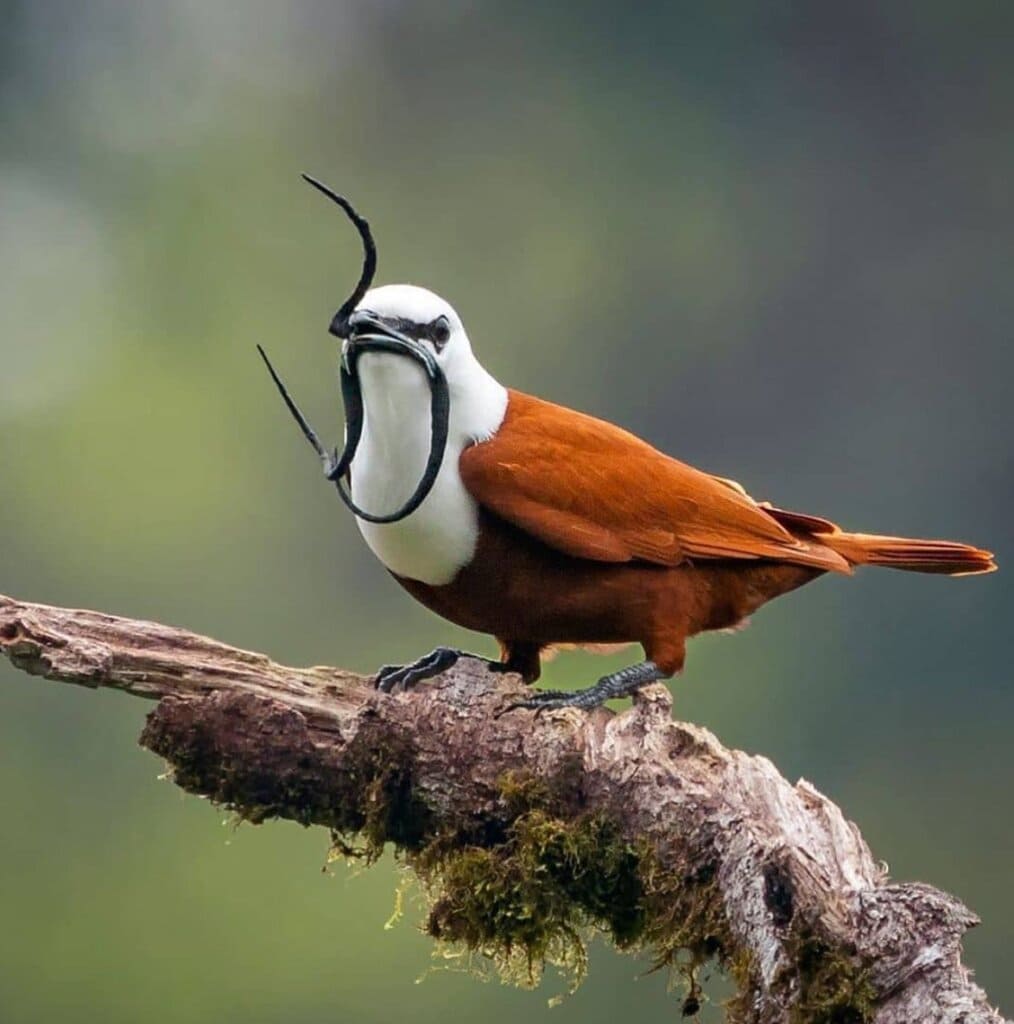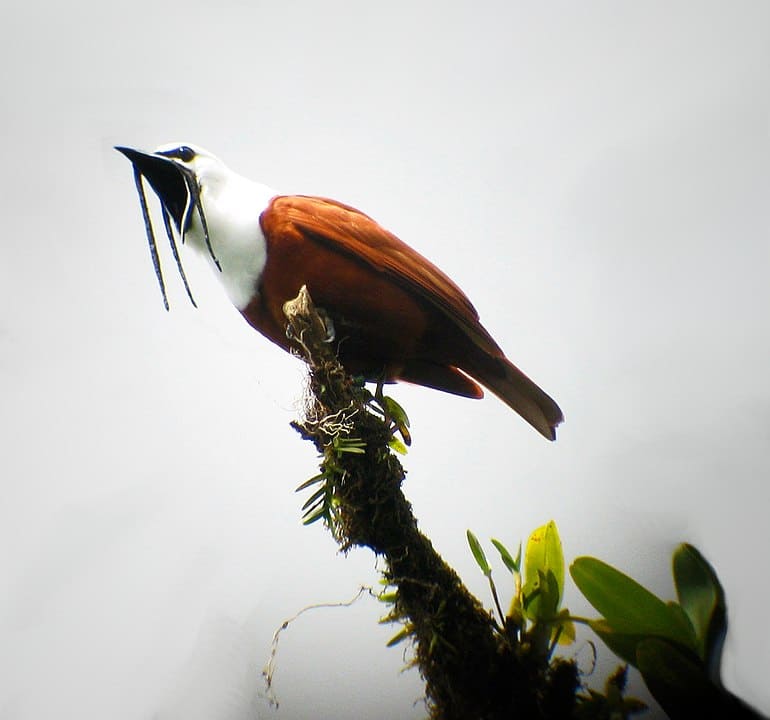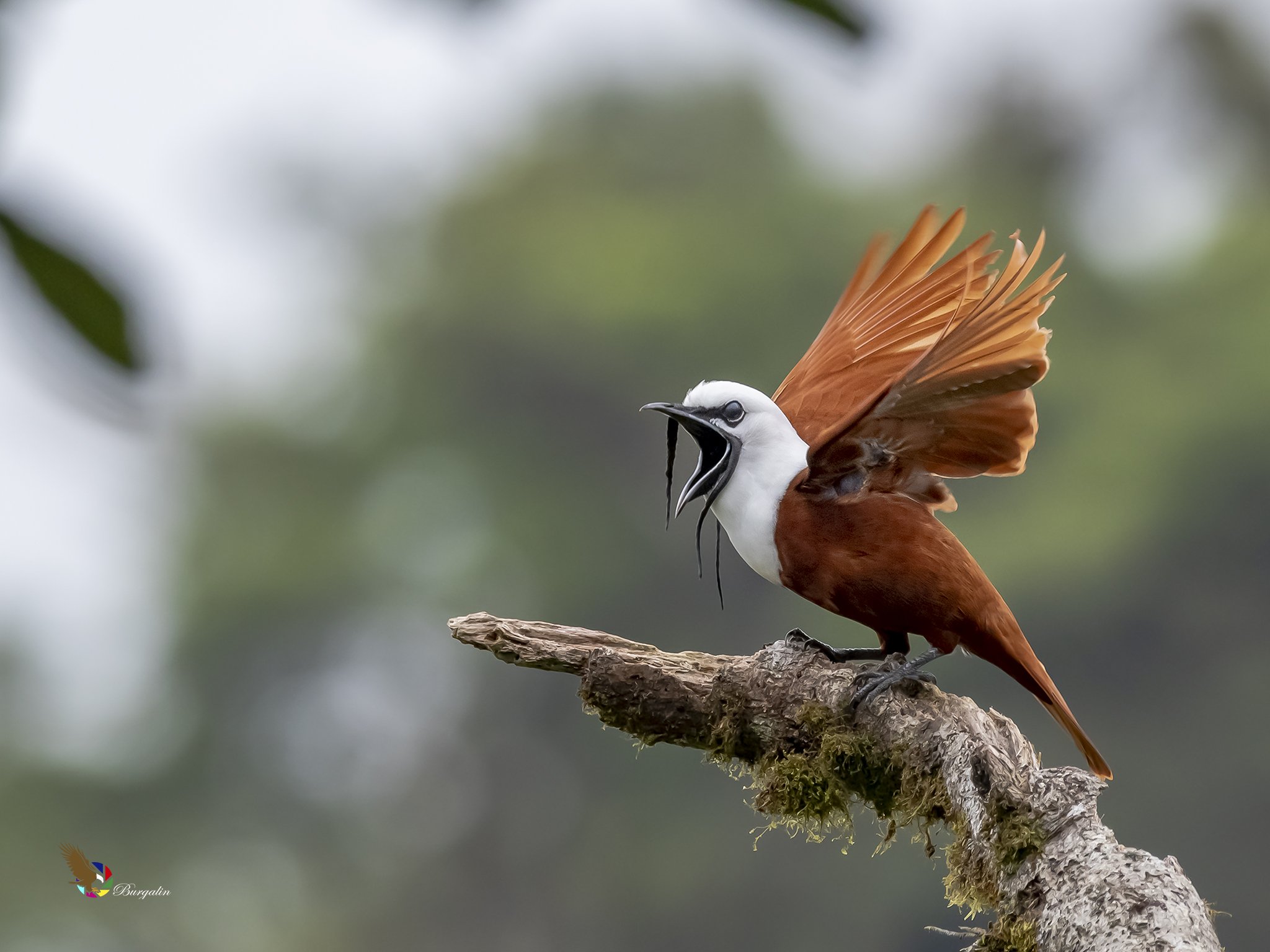
The Three-Wattled Bellbird is a fascinating bird that has captured the attention of bird enthusiasts around the world. This bird is easily recognizable by its reddish-brown and rusty plumage, but it’s the white head and neck that make it truly unique. The bird’s striking appearance is further enhanced by its mustache, which is made up of three long feathers that protrude from its beak.
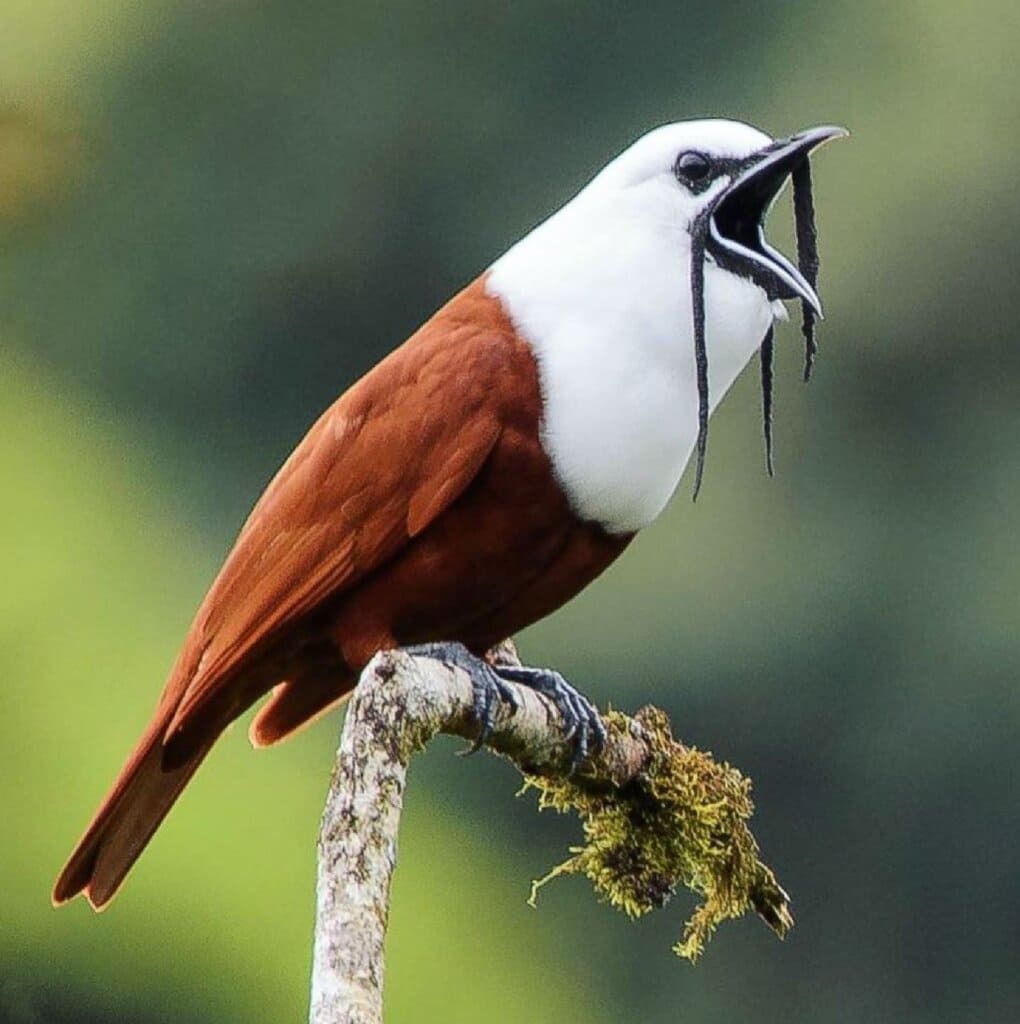
These birds can be found in the forests of Central America, where they live in small groups and feed on fruit and insects. They are known for their loud, distinctive calls, which can be heard from miles away. The call of the Three-Wattled Bellbird is often described as sounding like a bell, and it’s easy to see why. The bird’s name comes from the three wattles, or fleshy ornaments, that hang from its beak and vibrate when it sings.
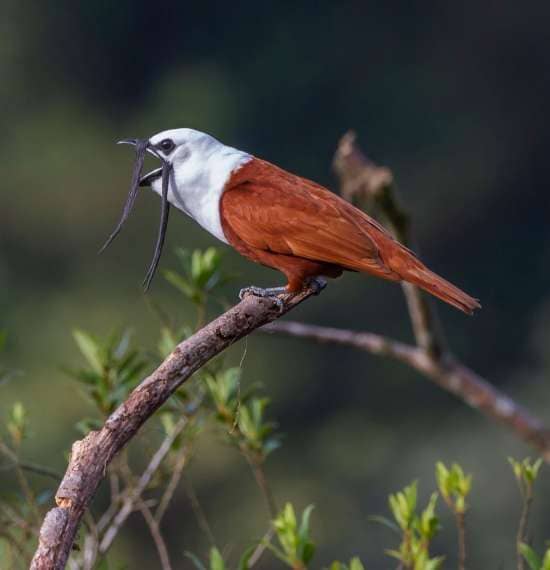
Unfortunately, the Three-Wattled Bellbird is considered to be a vulnerable species due to habitat loss and hunting. Deforestation and agricultural expansion have reduced the bird’s habitat, and hunters prize the bird’s feathers for their beauty. As a result, conservation efforts are being made to protect this fascinating bird and ensure its survival for generations to come.
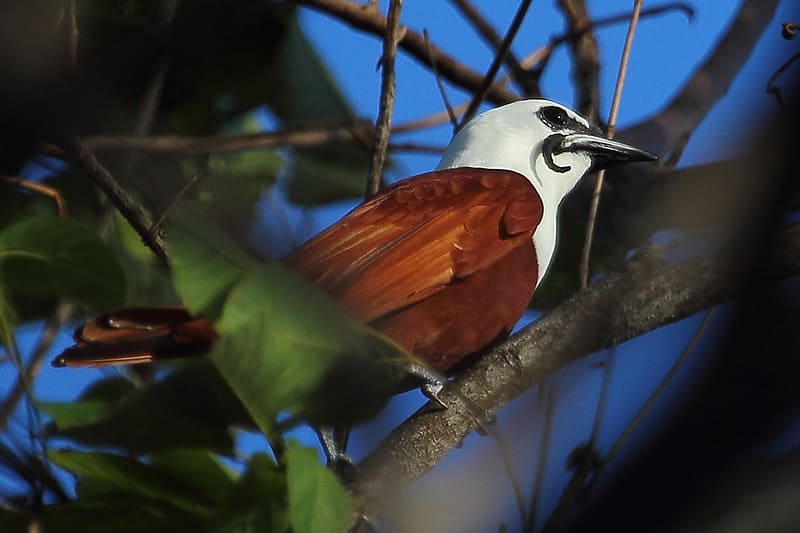
Conservationists are working to protect the Three-Wattled Bellbird by preserving its habitat and raising awareness about the bird’s plight. Ecotourism is also being used as a way to generate income for local communities while promoting the conservation of the bird. By encouraging visitors to observe the bird in its natural habitat, ecotourism provides an alternative to hunting and helps to support local conservation efforts.
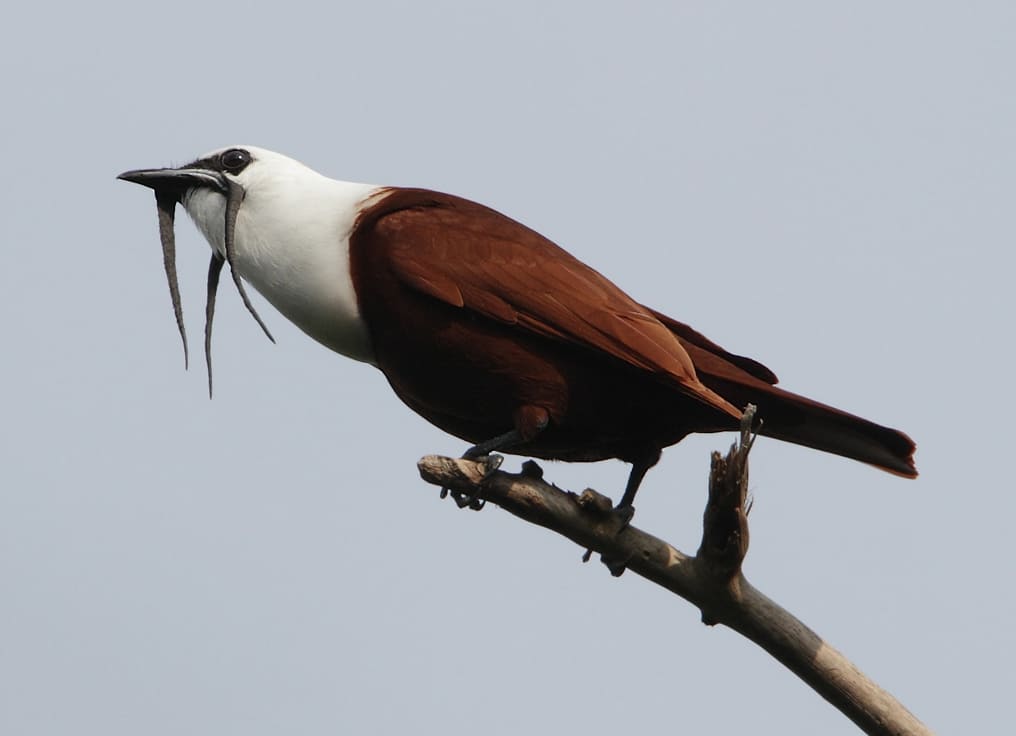
In conclusion, the Three-Wattled Bellbird is a unique and fascinating bird that deserves our attention and protection. With its striking appearance, distinctive call, and vulnerable status, this bird is a symbol of the importance of conservation and the need to protect our natural world. Let’s work together to ensure the survival of the Three-Wattled Bellbird and other endangered species for generations to come.
